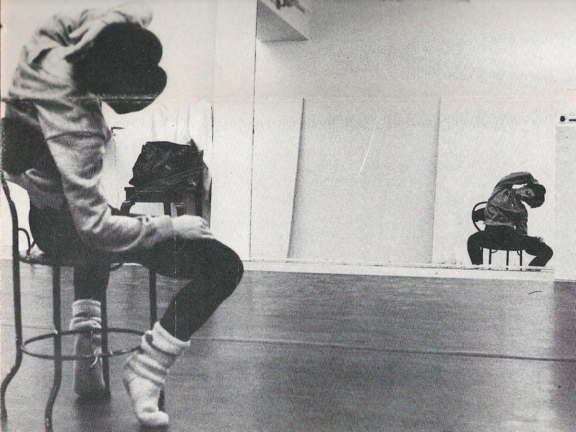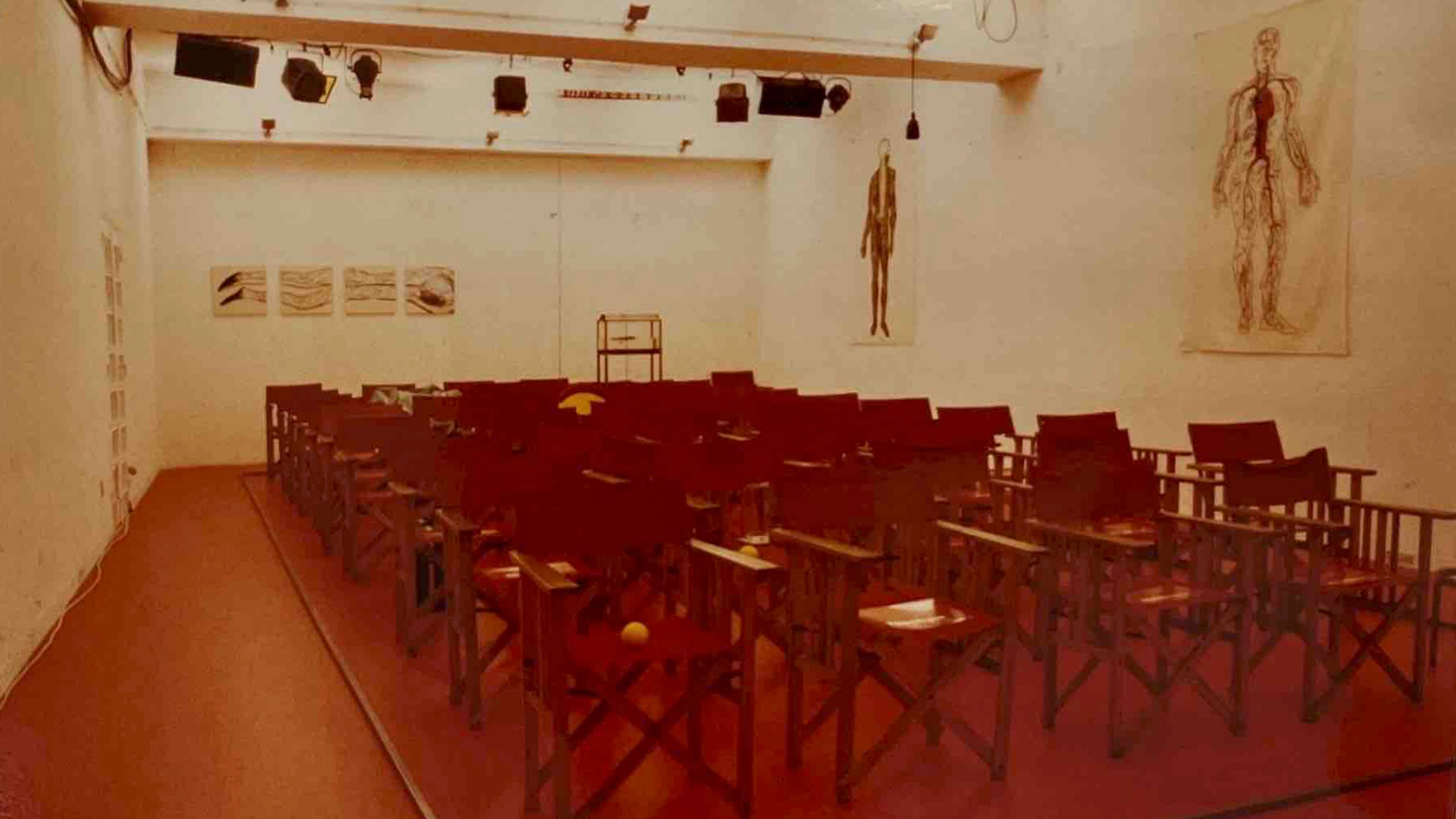
ZOO&lógica
By Margarida Bettencourt, Ana Rita Palmeirim, Carlos Zíngaro, Paulo Graça and Nuno Carinhas with the Portuguese Higher School of Dance (ESD)
Event Slider
Date
- / Cancelled / Sold out
Location
Room 1 Calouste Gulbenkian FoundationDuration: 60 min.
“Let us consider the universe: strange, fascinating and diverse. Let us consider its movements: imperceptible and interminable. Such harmony! Imagine the dancer executing gestures. After each movement, other movements, each one from the imaginary line of ephemeral movements. The dancer is joined by another dancer, and another, and another. It is no longer a detached image; it is an indescribable image space. The empty space decorates itself, (the house), with objects that are just objects. Thus, a fantasy. Arithmetic, the first science, the first measure, comes from the word “rhythm”. Rhythm adjusts to the exact measure of things, objects, movements of the dancers that cyclically produce the party in the house. The party is always social, i.e. indefinable, undemonstrable, undelayable, infecting everything centripetally with its laws. Unknown?! Try it! The universe – that very thing – continues to expand infinitely.”
— António Pinto Ribeiro, from Clarice Lispector, Zoo&lógica, 1984
ZOO&lógica: Instalação a Habitar por Coreografias [ZOO&logic: Installation to be Inhabited by Choreographies], performed in 1984, was an artistic gesture precursor of the openness and experimentation that, years later, would characterise Nova Dança Portuguesa [New Portuguese Dance]. Under the driving force of choreographer Paula Massano, some of the participants at the time, and her accomplices, were Margarida Bettencourt, Ana Rita Palmeirim, Filipa Mayer and Gagik Ismailian (dancers of Ballet Gulbenkian), Nuno Carinhas (scenic space), Constança Capdeville and Carlos Zíngaro (music), Paulo Graça (light design) and António Pinto Ribeiro (text).
Performed at Os Cómicos gallery in Lisbon, ZOO&lógica was the result of a collaborative process profoundly based on improvisation, which updates, in Portugal, certain propositions from postmodern American dance. Interdisciplinarity was a fundamental part of the process and the introduction of multiple viewing angles ridded the performance of a single frontal relationship with the audience. Space becomes the work’s protagonist, in the manner that it embraces bodies and objects, music and voices, and dances and texts within no particular order of hierarchy.
Almost forty years later, using scores, audio recordings and film footage, choreographers Margarida Bettencourt and Ana Rita Palmeirim return to ZOO&lógica together with Nuno Carinhas, Paulo Graça and Carlos Zíngaro. Performed by the final year students of the Escola Superior de Dança [Portuguese Higher School of Dance], the piece will reactivate the ideas proposed by the original work.
The performance is followed by a talk with the artists, moderated by Maria José Fazenda.
Ana Rita Palmeirim (1955, Lisbon) joined the Portuguese National Conservatory Dance School in 1973, where she had her first choreographic experiences. She danced with the Gulbenkian Ballet (1975-94), choreographing in some Choreographic Studios. She took part in independent projects such as Vamos Satiar, Tanza Variedades, ZOO&lógica, and 1º Encontro dos Peixes, and choreographed works for children.
Margarida Bettencourt (1962, Johannesburg) is a dancer-choreographer, teacher and movement therapist. She was part of the cast of the Gulbenkian Ballet from 1980 to 1993. Her solo work is characterized by an emphasis on the body as a potential for expression – her research explores this potential as a transformative, therapeutic and creative force.
Carlos Zíngaro (1948, Lisbon) is a musician, composer and visual artist. A pioneer in Portugal in the use of new technologies and real-time composition, he has had an extensive practice in experimental arts and multiple collaborations with some of the biggest names in new international music, with a discography of more than 60 titles.
Paulo Graça (1958, Lisbon) began working as a lighting designer in 1978 and has collaborated with directors such as Ricardo Pais, Carlos Avilez, Jorge Silva Melo, Jorge Listopad and Nuno Carinhas; choreographers such as Margarida de Abreu, Paula Massano, Olga Roriz, Paulo Ribeiro, Benvindo Fonseca, Vera Mantero, Gagic Ismailian and Clara Andermatt; and set designers such as José Manuel Castanheira, António Lagarto, José Costa Reis, Nuno Carinhas, Jasmim Matos and António Casimiro. He was Technical Director of the CNB from 1996 to 1998 and of the Belém Cultural Centre from 1998 to 2010.
Nuno Carinhas (1954, Lisbon) has studied painting at the School of Fine Arts in Lisbon. He exhibited drawings and paintings in solo and group exhibitions, and directed performances. Having been a set and costume designer for theatre and dance, cinema and opera, he has also been a theatre director, staging texts by many national and foreign authors. He was the Artistic Director of the São João National Theatre (2009-2018).
dance not dance
This event is included in the (re)performances, films and talks series which constitutes the first part of dance not dance – archaeologies of the new dance in Portugal. More info.
Credits
Interpreters
Final year students of the Bachelor's program at the School of Dance
Direction
Ana Rita Palmeirim and Margarida Bettencourt
Consultants
Gagik Ismailian and Filipa Magalhães
Set Design
Nuno Carinhas
Lighting
Paulo Graça
Music
Carlos Zíngaro and Constança Capdeville
Acknowledgments
Carlos Alberto Augusto and LaPra (Laboratory for Audio Preservation and Restoration at CESEM - Center for the Study of Sociology and Musical Aesthetics of FCSH at Universidade NOVA, coordinated by Isabel Pires
Based on ZOO&lógica (1984) by Paula Massano
ZOO&lógica I – Érratica [Erratic]
Choreography
Gagik Ismailian
Music
Carlos Zíngaro
ZOO&lógica II – Ainda bem [Fortunately]
Choreography
Ana Rita Palmeirim
Music
Constança Capdeville
ZOO&lógica III – O corpo é uma paisagem [The body is a landscape]
Choreography
Paula Massano
Music
Carlos Zíngaro
Text
Clarice Lispector / António Pinto Ribeiro
Dancers
Ana Rita Palmeirim, Filipa Mayer, Gagik Ismailian, Margarida Bettencourt, Paula Massano
Musicians
Carlos Bechegas (flute, soprano saxophone), Jorge Lampreia (flute, soprano saxophone), Carlos Zíngaro
Choir
Birte Lundwald, Ana Rita Palmeirim, Elisa Ferreira, Zaire Zeyd, Diana Pinheiro
Set and Costumes
Nuno Carinhas
Screenwriter
Wladimir Franklin
Lighting Design
Paulo Graça
Collaboration
The Calouste Gulbenkian Foundation reserves the right to collect and keep records of images, sounds and voice for the diffusion and preservation of the memory of its cultural and artistic activity. For further information, please contact us through the Information Request form.


